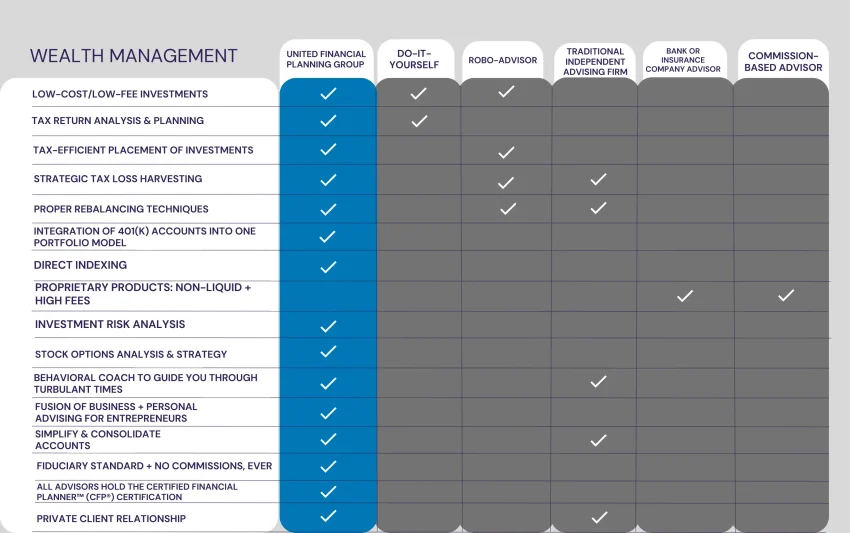The DINKs wealth comparison highlights a striking reality in today’s economic landscape, revealing that couples without children—despite their seemingly luxurious lifestyle—hold significantly less wealth than their parenting counterparts. As the American Dream evolves, many young couples are forgoing traditional milestones like homeownership, which plays a vital role in building generational wealth. Analysis from the Pew Research Center indicates that while DINKs may enjoy higher incomes and greater disposable funds, their lack of home equity contributes to a substantial wealth gap. In this changing financial climate, the financial status of DINKs demonstrates the complexities of modern living, where 71% of these couples are homeowners compared to a dominant 79% of families with children. Understanding the nuances of DINKs financial scenarios offers crucial insights into the emerging generational wealth divide and the shifting perceptions of success and stability in America.
Examining the financial landscape of dual-income couples without children unveils intriguing contrasts in their wealth status. These childless partners often prioritize career advancements and lifestyle luxuries over traditional investments such as homeownership, which traditionally have fostered wealth accumulation. With the American Dream morphing to meet contemporary economic pressures, the financial trajectory of these couples contrasts sharply with those who have chosen to raise families. Many are entangled in a generational wealth divide, as the realities of rising housing costs impact their long-term financial security. By exploring the financial situation of couples who do not have dependents, we can better grasp the evolving definitions of stability and prosperity in modern society.
Understanding the DINK Lifestyle Impact on Wealth
The DINK lifestyle, characterized by dual-income couples without children, often appears as a financial boon on social media platforms. Couples frequently share snippets of their lives showcasing vacations, dining out, and indulgent experiences. However, this facade can be misleading as studies reveal that these couples typically possess less wealth compared to those with children, primarily due to lower homeownership rates. Homeownership has long been a cornerstone of wealth accumulation in the United States, and without the impetus of children to settle down and invest in property, many DINKs miss out on this crucial financial milestone.
Many DINKs boast higher combined incomes and education levels, yet their wealth gap in comparison to couples with kids is striking, with a median wealth of $214,700 against $361,500 for families. The focus on personal spending rather than investment in property contributes to this disparity. As the economic landscape shifts, understanding the implications of the DINK lifestyle on long-term financial security becomes vital for these couples, who might prioritize immediate gratification over future wealth.
DINKs Wealth Comparison: The Homeownership Dilemma
The contrast between DINKs and families with children is stark when it comes to homeownership—71% of DINKs own homes, compared to 79% of dual-income couples with children. This distinction is pivotal since home equity significantly contributes to overall wealth. As cities grow more expensive, the trend of DINKs delaying home purchases due to lack of children can lead to missed opportunities for wealth accumulation. Without the motivator of raising a family, DINKs may opt for urban living, which, while trendy, often translates into higher rents and lower savings for future generations.
Furthermore, the generational wealth divide widens as younger DINKs may find it increasingly difficult to enter the housing market. With the median price of homes skyrocketing and mortgage rates at an all-time high, DINKs are caught in the bind of wanting stability yet facing the harsh realities of affordability. As potential homebuyers, their hesitations may hinder their financial growth, creating a cycle where they remain renters much longer than prior generations—ultimately affecting their wealth trajectory.
The Shifting American Dream for DINKs
The concept of the American Dream has evolved significantly, with DINKs embodying a shift in societal values and economic reality. Once, the pathway to the American Dream was synonymous with homeownership, raising children, and achieving middle-class stability. However, younger couples are redefining this narrative, often prioritizing lifestyles that favor career advancement and joint experiences over traditional family structures. This shift reflects a broader change in aspirations, shaped by economic pressures that make homeownership less attainable.
As societal norms shift, couples without children navigate this changing landscape with increased disposable income yet reduced wealth accumulation. For many DINKs, the decision not to have children is not merely personal; it’s often influenced by a desire to maintain a certain lifestyle amidst rising living costs. Nevertheless, this evolution of the American Dream could lead to long-term financial implications, as the lack of wealth-building opportunities associated with homeownership poses questions about future prosperity.
Generational Wealth Divide: DINKs vs. Families with Kids
The generational divide in wealth accumulation reveals stark discrepancies between DINKs and families with children. Baby boomers, who capitalized on a favorable market and invested in homes, now enjoy a collective net worth exceeding $82 trillion. In stark contrast, millennials and Gen Xers—many of whom may identify as DINKs—experience financial challenges that thwart their ability to build similar wealth. Rising home prices compounded by stagnant wages result in an alarming trend where younger generations find themselves increasingly financially insecure.
This divide emphasizes the challenges faced by DINKs in accumulating generational wealth. For those couples who aspire to one day start families, the current housing market presents daunting barriers that could further complicate their financial future. Without significant investments in real estate, DINKs risk being on the wrong side of the wealth gap, highlighting the urgent need for policy changes aimed at making homeownership more accessible to a wider demographic.
Financial Strategies for DINKs: Investment and Savings
Given the challenges faced by DINK couples in building wealth, implementing sound financial strategies is crucial. Instead of relying solely on disposable income for leisure activities, DINKs could benefit significantly from allocating a portion of their earnings into savings and investment vehicles. Establishing a robust emergency fund, investing in retirement accounts, and exploring other asset-building options such as real estate investment trusts (REITs) could bolster their financial standing.
Long-term wealth creation for DINKs hinges on a shift in mindset from short-term pleasure to strategic financial planning. By prioritizing savings over conspicuous consumption, dual-income couples can work towards bridging the wealth gap with families and setting up a more secure financial foundation—whether they choose to remain child-free or eventually grow their families.
The Future of DINK Finances: Preparing for Change
With evolving economic conditions, DINKs must prepare for potential financial shifts that could impact their stability. Factors such as potential economic downturns, housing market fluctuations, and changes in personal circumstances necessitate a proactive approach. Understanding the long-term implications of their current lifestyle and ensuring alignment with their future goals will be key in navigating the uncertainties of wealth accumulation.
Moreover, as demographics change, DINKs have the opportunity to influence financial products and social policies. By advocating for more equitable housing policies and economic initiatives, DINK couples can help reshape the financial landscape, allowing not only for their own prosperity but also for generations to come. This step is vital in ensuring that future DINKs can thrive financially without compromising their lifestyle choices.
Challenges Faced by DINKs in Homeownership
The path to homeownership for DINKs is fraught with challenges, largely stemming from a high cost of living and the competitive nature of today’s housing market. Many DINK couples may find themselves in bidding wars, exacerbating the difficulties in securing a desirable home. Moreover, with many young professionals prioritizing rent over a mortgage, the fear of commitment can further impede their ability to transition from renters to homeowners.
Additionally, the lack of stable, long-term financial outlooks can deter DINKs from making significant investments in real estate. As they navigate job markets and potential relocations for career advancement, this uncertainty can lead to delays in home buying decisions, keeping them cyclical in rental situations instead of benefitting from the wealth-building advantages of property ownership.
The Emotional Landscape of DINKs and Wealth
While financial concerns often dominate discussions surrounding DINKs, the emotional implications of their lifestyle choices cannot be understated. Many DINK couples grapple with societal pressure to conform to traditional family structures and encounter feelings of isolation as they forgo parenting. Balancing financial freedom with societal expectations can lead to internal conflicts, affecting their overall happiness and life satisfaction.
Furthermore, the lack of generational wealth transfer can heighten feelings of anxiety regarding their future financial security. DINKs might feel the weight of expectations to eventually conform to conventional paths, prompting them to reconsider lifestyle choices. Understanding and addressing these emotional facets are essential for DINK couples as they navigate the decisions that will ultimately shape their financial futures.
Conclusion: The Evolving Narrative for DINKs
In summary, the DINK lifestyle embodies a plethora of opportunities for financial management and personal freedom, yet it comes with unique challenges that could impact long-term wealth. As younger generations redefine their life paths, the importance of informed financial decision-making becomes critical. DINKs must align their present choices with future aspirations, ensuring that their lifestyle does not inhibit their potential for wealth-building.
Ultimately, the financial narrative for DINKs is an ever-evolving one, informed by changing societal norms and economic realities. By embracing strategies aimed at fostering wealth, advocating for systemic changes, and understanding the emotional complexities of their lifestyle, DINK couples can navigate their financial journeys with greater assurance and resilience.
Frequently Asked Questions
How does DINKs wealth comparison reveal financial differences between couples with and without children?
Studies show that DINKs, or dual-income no kids couples, tend to have lower wealth compared to couples with children. For instance, DINKs have a median wealth of $214,700 while couples with kids boast a higher median wealth of $361,500, highlighting the significant impact of factors such as homeownership and accumulated assets on their financial status.
What role does homeownership play in DINKs financial status compared to couples with children?
Homeownership is crucial in wealth accumulation, and statistics indicate that only 71% of DINKs own homes compared to 79% of dual-income couples with children. This lower homeownership rate can lead to less equity and wealth accumulation for DINKs, emphasizing the importance of housing as a wealth-building tool.
How is the American Dream changing for DINKs and traditional families?
The American Dream is evolving, with younger generations, particularly DINKs, choosing to prioritize financial freedom over traditional family structures. Unfortunately, high housing costs and economic conditions make it challenging for DINKs to achieve homeownership, which is a key aspect of wealth.
What factors contribute to the generational wealth divide evident in DINKs wealth comparison?
The generational wealth divide is influenced by various factors, including rising housing prices and economic accessibility. While older generations like boomers benefited from affordable homeownership, DINKs face significant challenges in this area, resulting in decreased opportunities for wealth accumulation.
How does age factor into DINKs financial status compared to dual-income couples with kids?
Age is a critical factor in wealth accumulation. DINKs generally have a median age of 36, while couples with children are typically older, averaging 43. This age difference indicates that couples with children may have had more time to accumulate wealth, further contributing to the DINKs wealth comparison.
What are some common misconceptions about DINKs financial freedom and wealth?
Many perceive that DINKs experience greater financial freedom due to their higher disposable income and lifestyle choices, but contrary to this belief, they often have less wealth than couples with children, primarily due to lower rates of homeownership and accumulated wealth.
Can DINKs improve their financial status in the long run despite current wealth challenges?
While DINKs face current wealth challenges, there is potential for improvement. As they prioritize financial planning, savings, and potentially starting families in the future, their financial status may enhance if they can navigate the difficulties of homeownership and rising housing costs.
| Key Point | Details |
|---|---|
| DINKs Financial Freedom | DINKs (Dual-Income, No Kids) lifestyle appears to provide financial freedom, promoting disposable income online. |
| Wealth Comparison | DINKs have a lower median wealth of $214,700 compared to $361,500 for couples with children according to Pew Research. |
| Homeownership Rates | 71% of DINKs own homes versus 79% of dual-income couples with kids, affecting long-term wealth accumulation. |
| Age Factor | The median age of DINK couple spouses is 36, compared to 43 for couples with kids, influencing wealth accumulation. |
| Challenges for DINKs | High home prices and mortgage rates make homeownership increasingly unattainable for DINKs considering future children. |
| Generational Wealth | Baby boomers have a collective net worth of $82 trillion, significantly outpacing younger generations amid rising home values. |
Summary
DINKs wealth comparison reveals that despite their seemingly carefree lifestyle and higher disposable income, dual-income couples without children possess significantly less wealth than their counterparts with children. The findings from the Pew Research Center indicate that DINKs may not have the financial advantages they appear to, particularly in terms of homeownership, which is a crucial factor in wealth accumulation. As trends continue to shift in the American housing market, DINKs face a precarious financial future that could affect their long-term financial stability.








